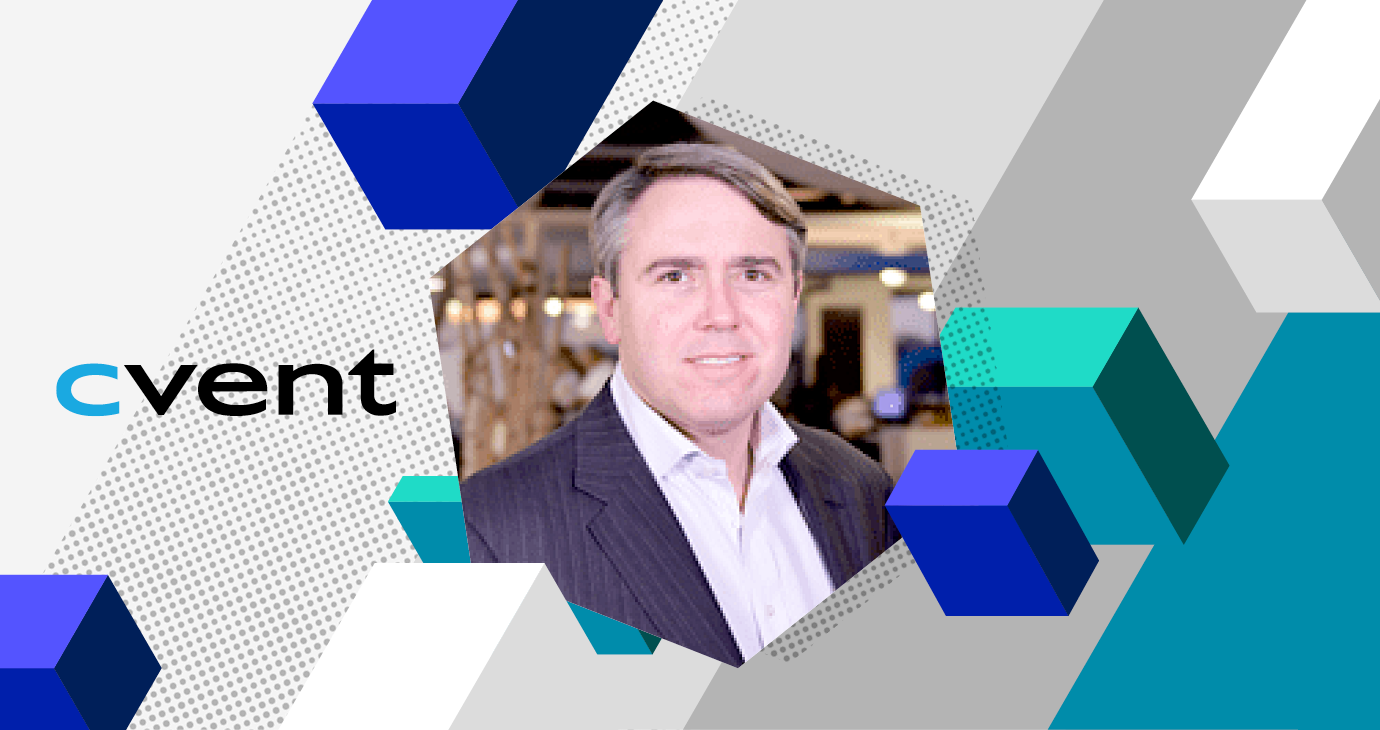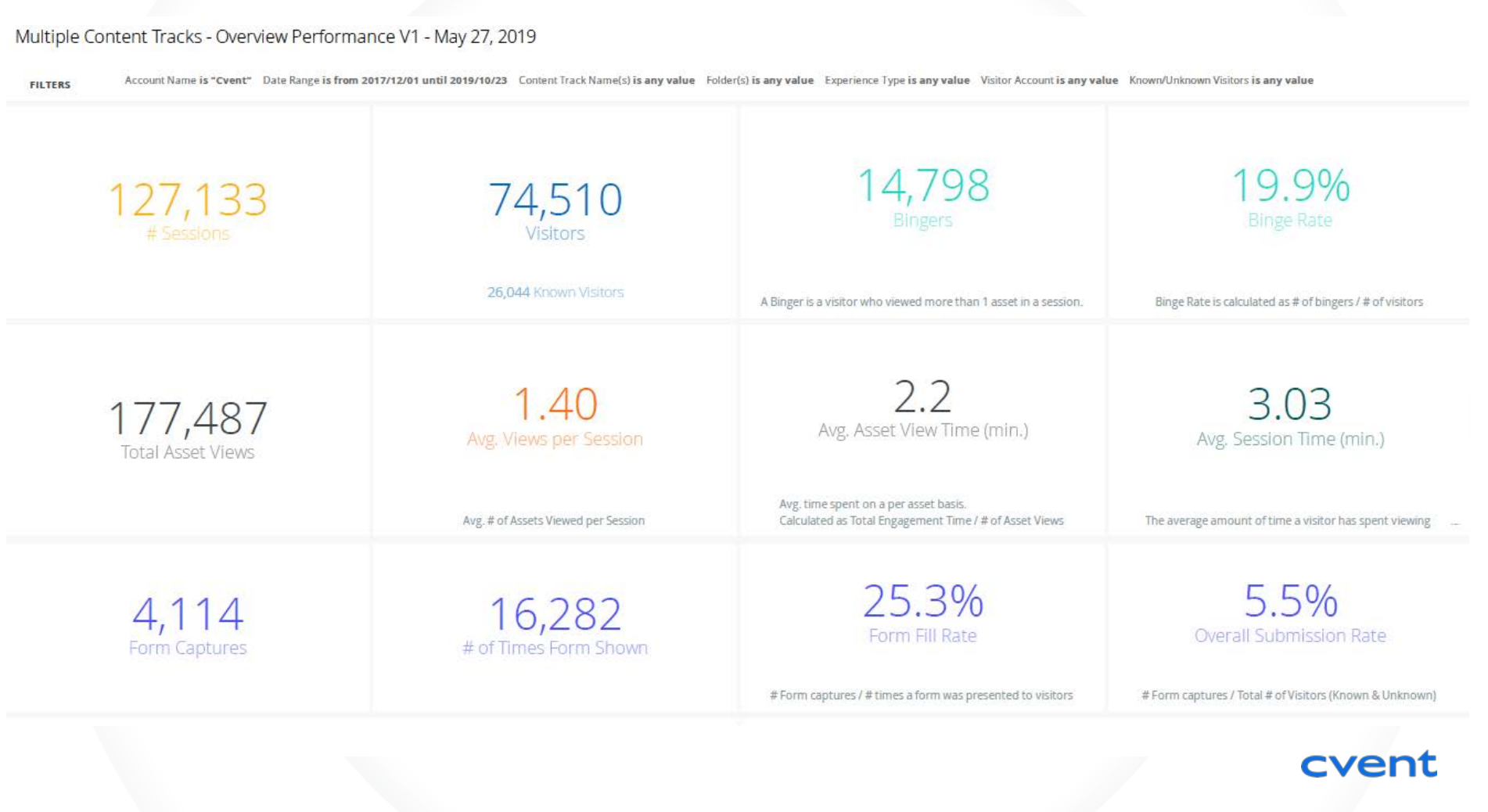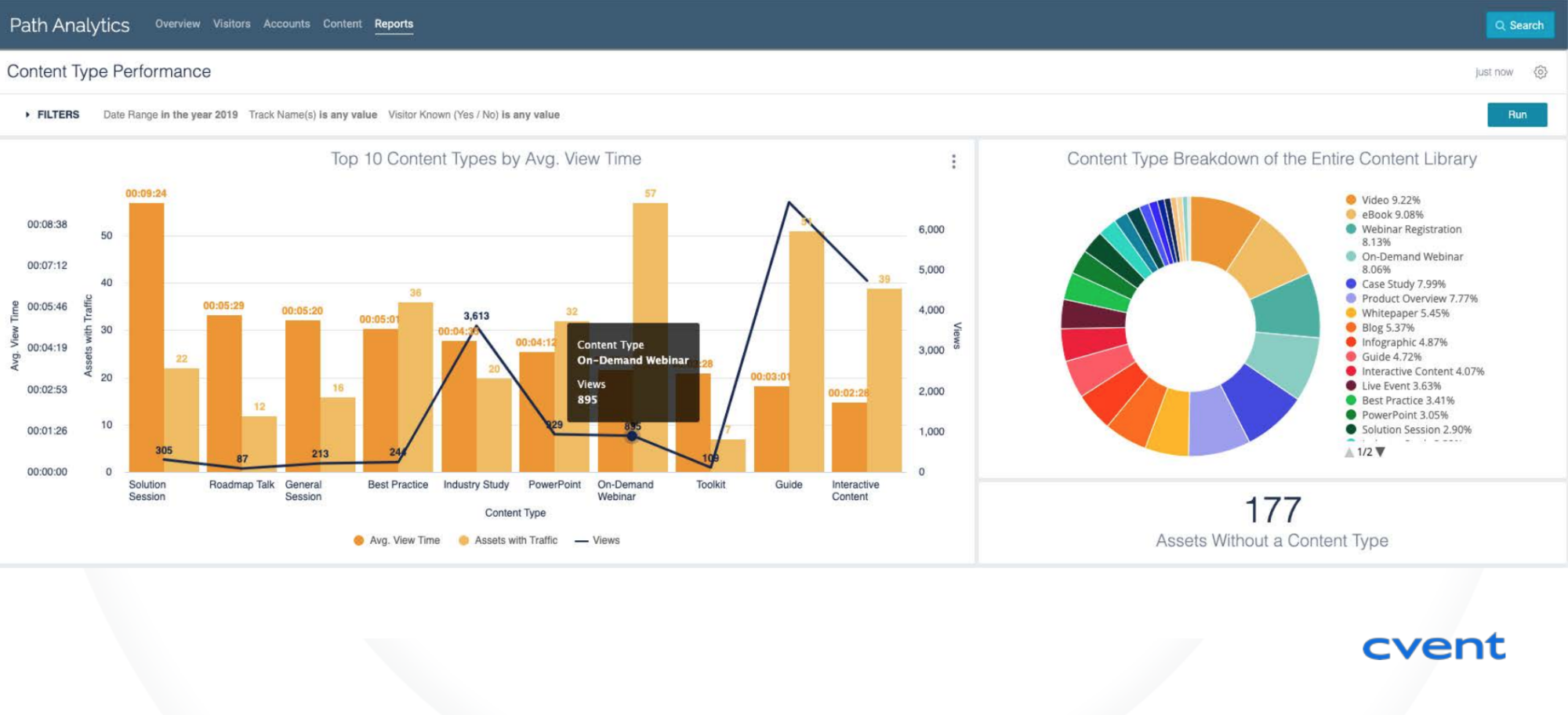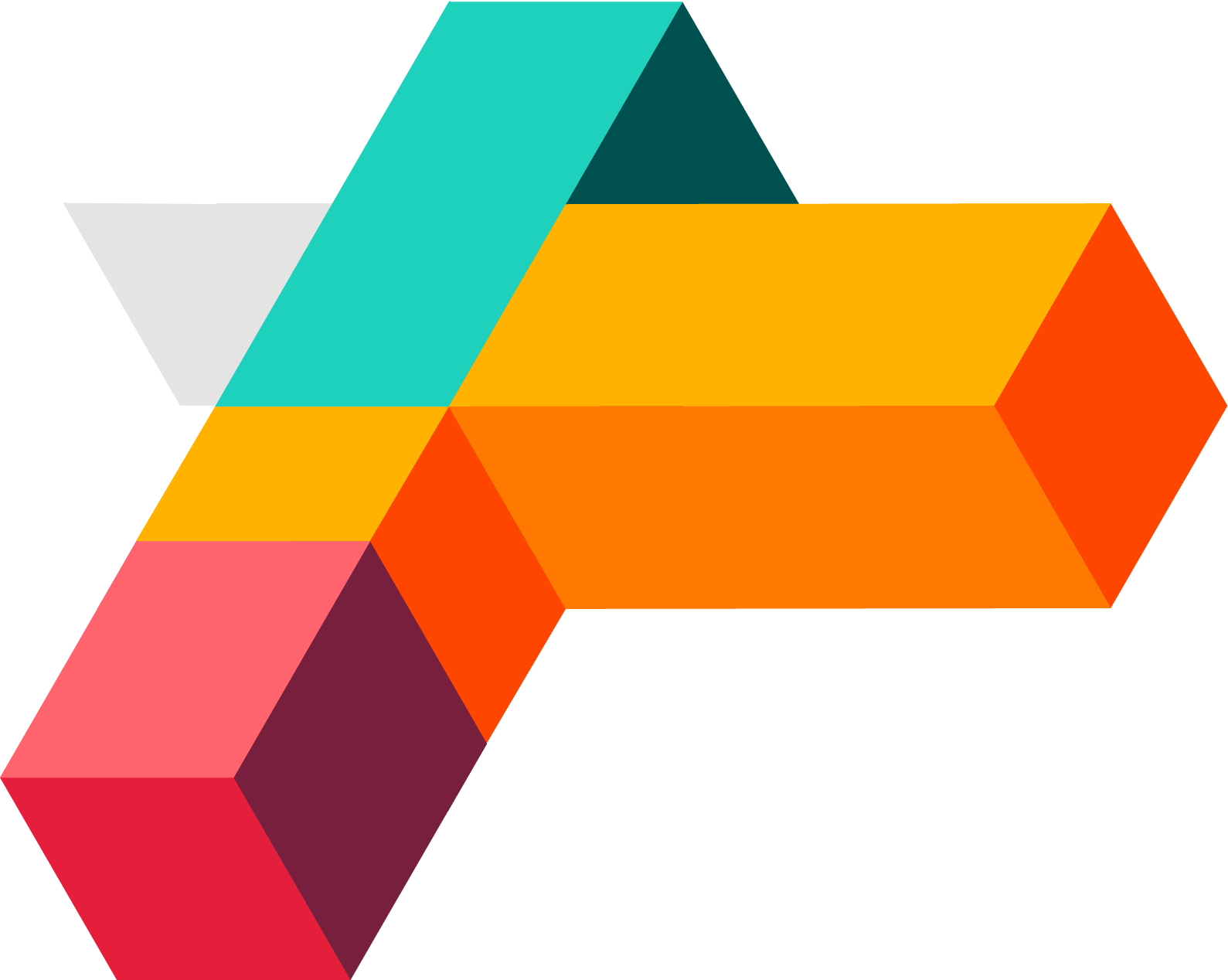
How Cvent Makes Critical Business Decisions Using Content Engagement Data
At Cvent, dealing with a sophisticated buyer in a complex environment requires more insightful data.

December 19, 2019
As the B2B buying process becomes complex, marketers are faced with the challenge of creating journeys that accommodate these intricacies and are a great experience for buyers.
The best business decisions are backed by data, but it’s difficult to find high-quality data about how your customers engage with your content — no matter how much of it you have already.
This was exactly the challenge that Cvent faced.
Cvent’s primary means of marketing is through field events. Through these events, they create awareness and generate demand. On average, they hold over 1,000 field events each year with high conversion rates. This makes it a central part of their growth model. They also have a wide variety of content to educate their 25,000 customers and over 300,000 users through the buying process.
But, Brad Gillespie, VP of Enterprise Solutions, realized they were dealing with a more sophisticated buyer in a more complex environment. They needed more insightful data to prove how their content was helping buyers through their journey.
Brad recently joined PathFactory on a webinar to explain how his team is delivering Cvent’s content across various channels to help educate, retain, and grow customer accounts. He also explains how they make strategic decisions based on real engagement data.
Delivering more than one asset at a time
Brad and his team started questioning how they were promoting webinars, live events, and seminars. They went down the list of every type of offer they were making. Then decided to move away from the landing page as the destination and point links to Cvent’s content assets in PathFactory Content Tracks.
“I believed in the philosophy that’s pretty deep within PathFactory. It’s about removing friction. The idea is that if you give a visitor an opportunity to consume more than one asset, there’s a high likelihood that they will do that.”
Here are two ways they put this into practice:
Use Case #1: Cvent’s Website
The first thing Brad and his team dove into was Cvent’s website content. It was geared toward the product-centric, transactional model, filled with landing pages, forms, and lots of dead-ends. Every piece of content led to a “one-and-done” experience. This made it difficult for buyers to access the content they needed to educate themselves about Cvent’s offerings in a timely manner.
Brad knew that he needed to do something different in order for Cvent to make the shift toward friction-free marketing. So he chose PathFactory to help him execute on that vision.
Cvent’s PathFactory instance became their defacto digital property. They started building and deploying audience-centric assets in PathFactory Content Tracks, which allowed visitors to binge content. This enabled Brad and his team to track that engagement. Once they started seeing a good amount of traffic, they decided to make PathFactory Content Tracks the destination across some other channels.
Use Case #2: Customer newsletter
Brad and his team created a newsletter specifically designed for their Enterprise customers.
Most B2B customer newsletters link to individual assets. The reader has to keep returning to the email to click on the next thing (or they might not click at all because it takes too much work to keep going back and forth). These types of newsletters need a lot of heavy lifting, like inserting different links in every CTA.
But Brad opted to provide customers with an easy way to consume content. So customers could become better educated and better adopt products. This is where PathFactory helped streamline the process for both Cvent’s customers and marketers.
And it became the second channel to drive traffic to their Content Tracks.
As they developed these initial use cases for the Event Cloud Enterprise, it slowly grew organically into their other two business units – Hospitality Cloud and Event Cloud. By doing this, they now had many more use cases and resources that they could now put behind PathFactory.
Using data to make better business decisions
Besides having an easier time providing relevant content to their buyers and making their experience seamless, they also have more visibility into data that helps them make better decisions.
Let’s take a closer look at two of the most important performance metrics and KPIs they use:
Binge rate and average asset view time
The dashboard has become the main source of data for the team. They monitor the total traffic of visitors and can see what percentage of them are bingeing. Kind of like how Netflix allows you to watch all the episodes of your favourite tv show in one sitting. You’re hooked!

Cvent averages around 50 to 60 thousand visitors to their website. But as seen on the dashboard, they are not getting as much traffic to their content assets. There is no need to compare! The two properties are meant to be complementary and provide their own set of metrics. These are important for Brad and his team to make critical marketing decisions. For instance, the average asset view time on the dashboard is a lot higher than what you might see on a typical website. This highlights the PathFactory approach to content compared to other digital properties.
Content performance
Brad began thinking about what changes Cvent can make based on the available data. He soon realized that he needs to first understand how much traffic is going into one type of asset.
They currently have 57 different on-demand webinar assets that are receiving excellent traffic. This indicates that the content is quite popular! On the other side of the spectrum, they wanted to understand average view-time by content type. For Solution Session assets (which is a content type that blends topic and product), they have a higher average view time.

So why is it that people are consuming On-demand Webinar content more frequently, but not staying long? How can they change that? They looked at Solution Session assets to see if there are content features that are not featured in their webinars. They also went deeper into any other features that may have an impact. Then tried to come up with ideas to increase the On-demand Webinar average view time.
What’s next? Leveling up and experimenting with gated content
Cvent’s marketing team can now make decisions based on what they want to focus on for all channels. They already made the decision to become audience-centric. And also to go from one PathFactory use case to many use cases using content consumption data.
Now they’re diving into deploying campaigns and assets by buying stage using PathFactory’s Recommend functionality. They are using assets across every stage of the buyer’s journey and seeing how customers consume content differently at different stages of this process.
Additionally, the team is experimenting with gated content. They are testing out various gating options. For instance, allowing users to consume two content assets but gate the third one.
Ultimately, shifting from a product-centric to an audience-centric mentality, activating content across different channels, measuring and improving content engagement, and using real-time data to make key business decisions, has transformed Brad and his team’s marketing efforts for the better.
Watch the webinar for the full scoop.







No comments yet